ANNAPOLIS, Maryland. December 23, 1783
To relinquish power voluntarily is a rare act—an act that requires integrity, dignity, and immense vision. What kind of person willingly gives up control over an entire nation?
 Courtesy of Ann Powell
Courtesy of Ann Powell
George Washington was such a person. He was commissioned by Congress in 1775 to fight the American Revolution as Commander in Chief of the Continental Army. Eight long and unpleasant years later, the war was over and Washington arrived to a warm reception in Annapolis in December 1783. He came here specifically to yield his military authority and deliver it back to the civilian Congress.
Why Did He Resign?
In a calculated speech delivered in the Maryland State House, he told Congress and the world that the newly independent nation must subordinate its military to the civilian government. This was—and is—a really big deal. This selfless act sent a message that the new nation of thirteen states would be governed by laws and not by a dictator, a monarch, or military forces.
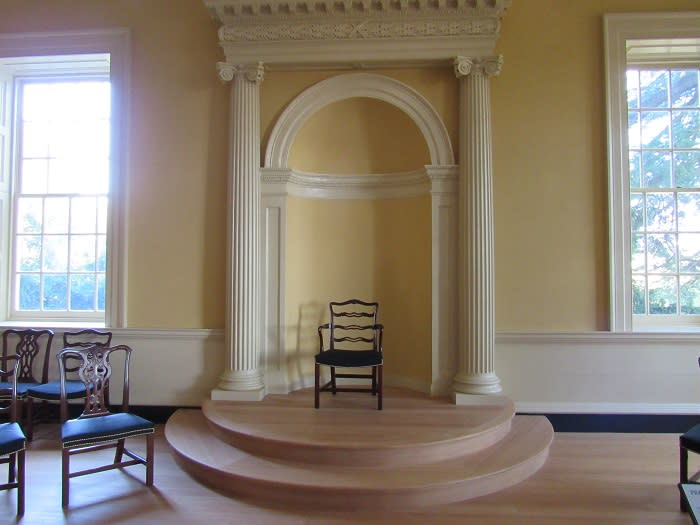 Courtesy of Ann Powell
Courtesy of Ann Powell
Washington’s military leadership and war victory over British forces caused many Americans and Europeans to believe that he would continue ruling as the new nation’s king. Instead, he chose to return to private life and allow Congress to create a civilian government that would control the military. This surprising peaceful transfer of power became a foundation of our democratic republic government.
Stand with George in the Old Senate Chamber
Here in Annapolis, you can stand next to George in the very room in which he delivered his important speech to Congress: The Old Senate Chamber in the elegant Maryland State House.
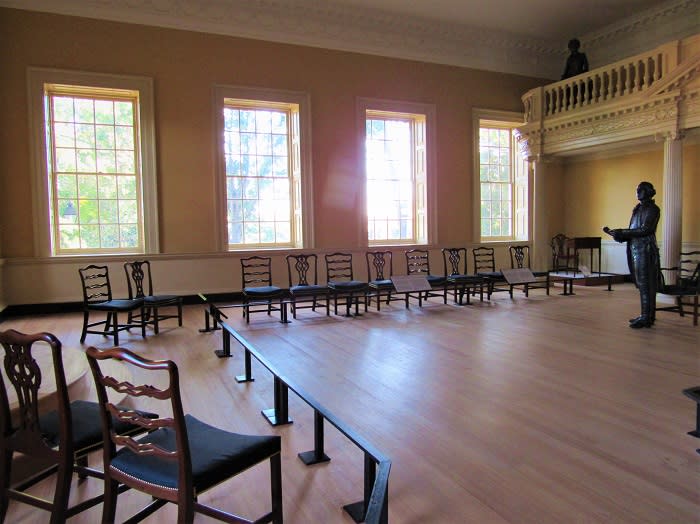 Courtesy of Ann Powell
Courtesy of Ann Powell
The space was recently restored to appear as it did during the period (1783-1784) when the Continental Congress convened in Annapolis. As the austere room is interpreted, the furniture and architecture reflect the way it probably looked on the date of Washington’s resignation. A life-size bronze sculpture of Washington faces the dais where the president of Congress sat.
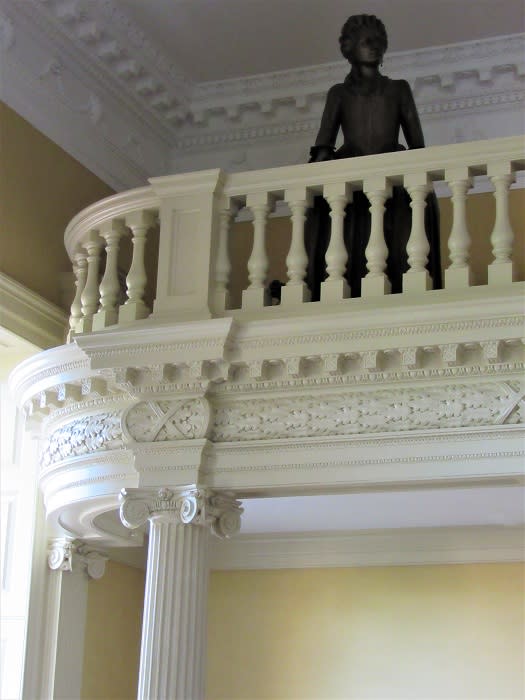 Courtesy of Ann Powell
Courtesy of Ann Powell
Upstairs in the “ladies balcony” sits the figure of Molly Ridout, who was present that day and wrote one of the few extant contemporary descriptions of Washington’s resignation address. In those days, women were excluded from the Senate floor. Her letter and others tell us that the room swelled with tearful emotion as Washington spoke.
A Momentous Speech
When Washington completed his emotional address, he handed his handwritten notes to an aide. Amazingly, those original pages, written in Washington’s own hand with his own edits, were kept in the same family for generations. They are now preserved in the Maryland State House in a state-of-the-art display case that preserves the 235 year-old address, considered to be the fourth most important document in American history.
Washington had asked for specific instruction regarding how Congress wanted him to present his resignation. The event was carefully scripted by a Congressional protocol committee that included Thomas Jefferson. The actual handwritten notes of that committee can also be viewed today in the State House.
Washington wrote his speech himself a day or so earlier while staying at Mann’s Tavern, an Annapolis inn then located at today’s intersection of Main and Conduit Streets in downtown. The original document shows that Washington deleted and replaced a few words that would have otherwise suggested that he was permanently retiring.
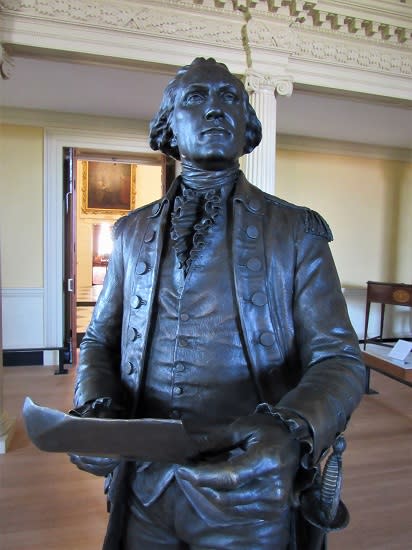 Courtesy of Ann Powell
Courtesy of Ann Powell
The night before Washington’s resignation, innkeeper George Mann catered an elaborate dinner and ball at the State House. The elegant setting, candles, dancing, and celebratory toasts signified that a momentous event was about to occur. Washington said it well in his own toast offered at the dinner; “Competent powers to Congress for general purposes,” expressing his heartfelt desire that greater federal authority should lie in Congress.
The next day, December 23, 1783, the Old Senate Chamber was packed with legislators, local dignitaries, and Revolutionary War officers. The themes of the day were respect and honor for General Washington and deference to the new national Congress. After speaking, Washington left Annapolis the same afternoon to cross the South River by ferry and travel to his cherished Mount Vernon for Christmas.
Creating A Democratic Civilian Government
Four years later, the principal of civilian control over the military was written into our Constitution in Article II, which says, “The President shall be Commander in Chief of the Army and Navy of the United States, and of the Militia of the several States, when called into the actual Service of the United States…”
Washington reluctantly came out of retirement a few years later in 1787 to become the unanimously elected president of the Philadelphia Constitutional Convention. His mere presence seemed crucial to the crafting of the Constitution.
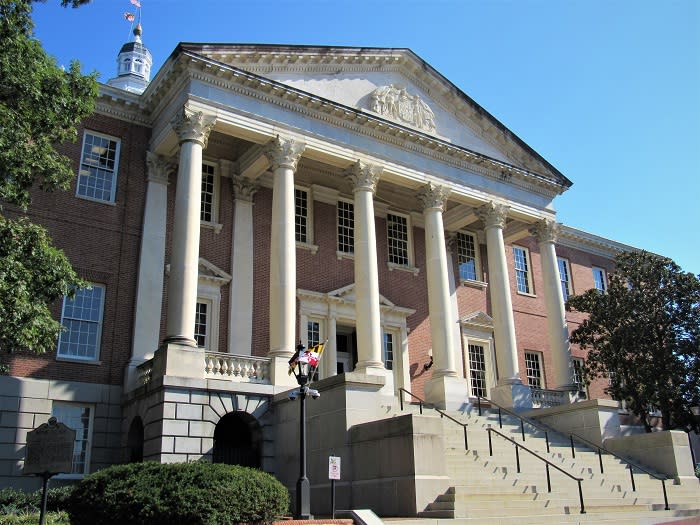 Courtesy of Ann Powell
Courtesy of Ann Powell
The resulting United States Constitution was ratified by the thirteen colonies in 1788, thereby creating the three branches of the new government and also the Electoral College. The first Electoral College unanimously elected George Washington to the office of President, a position that has dual roles—civilian head of the Executive Branch and Commander in Chief of the military. Washington served two terms as President and then voluntarily gave up power for good.
The Maryland State House is open to visitors (with photo identification) every day from 9:00 am to 5:00 pm, except for certain holidays. A self-guided tour is available, and informational signs and videos describe the exhibits.
For more information, visit https://msa.maryland.gov/msa/mdstatehouse/html/home.html
All images courtesy of Ann Powell








